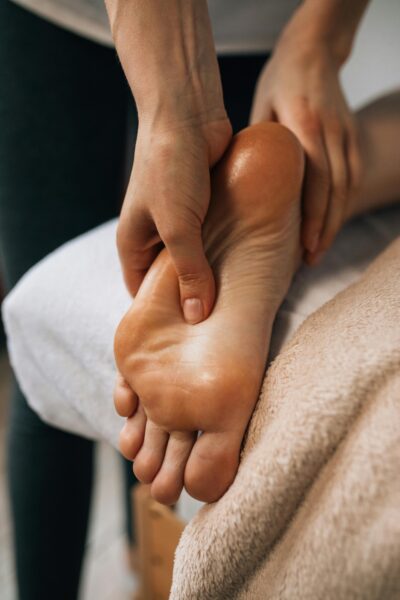
While acupuncture is renowned for its pain-relieving effects, its potential to enhance muscular strength and stability is often overlooked. Research indicates that targeting specific acupoints can enhance the body’s capacity to recover from fatigue and aids in quick recovery times. Many acupuncture points lie in deeper muscle layers. Acupuncture induces changes in nerve potentials, leading to improvements in strength, power, and speed which can be harnessed in future activities. Acupuncture has demonstrated remarkable benefits for improving endurance. Just a 10-minute session can delay muscle fatigue, optimizing the body’s ability for forceful, rapid movements (torque velocity), and improved stamina. Seeing that one treatment can make a difference, imagine how cumulative acupuncture treatments can enhance athletic outcomes and aid in recovery from injury. And while there is a known benefit for the elite athlete, it also helps with chronic pain patterns and is beneficial for improving and restoring muscle balance in people who feel unable to exercise.

Acupuncture has a profound effect on blood circulation, cerebral blood flow, and adenosine triphosphate (ATP) production. Myosin, a fibrous protein, along with actin, converts chemical energy in the form of ATP (the powerhouse of the cell) into mechanical energy, thus generating movement. Myosin is a key player in muscle contraction and contributes to both muscle strengthening and fatigue recovery. Acupuncture initiates parasympathetic excitation, leading to the sensation known as “De Qi.” When pushing on painful or tender spots, a layperson’s description of De Qi might be “Ah yes, that’s the spot” for both pain relief and muscle engagement. When needled, De Qi is often called fasciculation, or a muscle twitch, common in the Dry Needling* technique. The De Qi phenomenon is thought to occur due to the regulation of certain proteins within connective tissue cells, particularly myosin.
Acupuncture plays a vital role in addressing inhibited muscles, a condition distinct from muscle weakness. Unlike weak muscles that can still engage under load, inhibited muscles experience impaired contraction due to neurological factors. In order to regain strength in the muscle, the signal from the brain to the muscle needs to be restored. When an injury occurs or a repetitive use condition develops, the body’s protective mechanism, known as muscular inhibition, kicks in, limiting the activity of the affected muscle. The muscle’s function, once the injury has healed, may not be fully restored, leading to ongoing pain and limitation often mistaken for muscle weakness. Inhibition can stem from various sources, including injuries, joint trauma, or chronic muscle tension affecting opposing muscle groups. For instance, tight hip flexors (psoas) can cause neurological inhibition in the hip extensors (glutes); the muscles “turn off” and prevent them from engaging properly. When glute muscles are inhibited, it causes the low back, knees, and even the IT band to take on stress. Fortunately, acupuncture techniques involving precise stimulation of motor points can restore this connection. A motor point is the most electrically excitable part of a muscle, where nerves responsible for muscle movements attach. Utilizing electro-acupuncture (e-stim), experienced acupuncturists will provide targeted stimulation directly to these critical motor points, effectively correcting muscular inhibition and promoting optimal muscle function and balance.

Whether you’re grappling with muscle weakness, inhibition, or atrophy (muscle loss), remember, acupuncture offers a path to strength and resilience. By tapping into the body’s innate healing mechanisms, acupuncture not only relieves pain but also nurtures muscular health from within. If you’re ready to unlock your body’s full potential and embrace newfound strength, consider exploring the transformative power of acupuncture. Your journey to enhanced muscular strength and stability starts here.
* Dry Needling is also referred to as neuromuscular acupuncture or Intramuscular Stimulation (IMS).
Written by Tiffany Bilthouse, L.Ac., edited by Erin Pass, L.Ac., Dipl. C.H.
References:
Wang, L., Hu, R., & Chen, Y. (2021, May 25). Effect of Acupuncture on Timeliness of Male Shoulder Joint Endurance. PubMed. Retrieved from https://pubmed.ncbi.nlm.nih.gov/34070380/
Federation of American Societies for Experimental Biology (FASEB). “Acupuncture can improve skeletal muscle atrophy.” ScienceDaily. ScienceDaily, 23 April 2012. <www.sciencedaily.com/releases/2012/04/120423162247.htm>.



